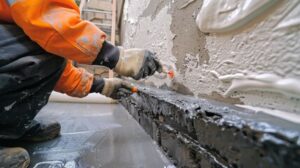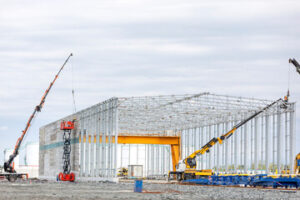Plano Foundation Inspections are an essential part of the maintenance of any commercial building. Qualified structural engineers look for warning signs like cracks in the concrete and shifting soil that can lead to serious damage.

They also examine crawl spaces for issues like sagging floors and sticking windows and doors that indicate shifts in the foundation. Here are some reasons why you should consider getting a foundation inspection:
Foundation issues are often out of sight, out of mind – until they’re too late. However, early detection of foundation problems is vital for long-term financial protection, as it allows for prompt and affordable repairs, preventing more costly structural damage later.
When performing a home or building inspection, be sure to look for signs of movement or shifting in the foundation and its supporting walls. While small hairline cracks are common, larger or widening cracks can indicate significant movement and a faulty foundation. Pay particular attention to cracks that form in a stair-step pattern along wall edges or at window and door openings, as these often indicate foundation settlement. Also look for gaps where walls or floors should meet, as well as sagging or uneven floors.
Water seepage in the basement or crawl space is another warning sign of a problem with the foundation. Check gutters and downspouts to ensure they are directing water away from the house foundation, which will help prevent moisture-related issues like bouncy floors and rotted wood.
Lastly, examine the exterior brick for signs of moisture intrusion. Moisture can cause a variety of issues, from mold and mildew to structural damage from hydrostatic pressure buildup against the foundation walls. Moisture penetration also causes concrete and brick to weaken, resulting in deterioration over time.
A simple test of the floor’s stability can be done by rolling a marble in various parts of the building to see if it rolls consistently in one direction, as this could indicate a slope due to foundation settlement. Also check for sagging or uneven floors, as these can indicate a serious issue that needs to be addressed.
Peace of Mind
Having a foundation inspection regularly performed will give you peace of mind knowing your home or commercial building is structurally sound. It can also help you avoid costly repairs in the future and preserve resale value.
A professional inspector will examine both the interior and exterior of your foundation, looking for cracks in the walls, especially horizontal ones. These may indicate hydrostatic pressure buildup behind the wall, or a shift in soil conditions. The engineer will also look at your grading around the home, checking for signs of soil erosion or movement. They will check for the condition of your support beams and floor joists, as well as any moisture issues in your basement or crawl space.
Moisture is a major cause of foundation problems, and can lead to extensive damage if not addressed quickly. The inspector will look for signs of moisture in the wall, such as a musty odor or white efflorescence (a powdery residue on the surface) as well as for standing water or pooling water in the area of the foundation.
Foundation inspections are a vital part of property maintenance, and will protect your investment, enhance resale value, ensure tenant safety and contribute to a seamless property management experience. Taking the time to understand the results of your inspection will enable you to make decisions that best fit your unique situation, and ensure your building’s structural integrity.
If you’re interested in learning more about the benefits of a foundation inspection, or have questions about our services, please contact us. We would be happy to assist you! We proudly offer residential and commercial inspections, as well as testing for soil conditions.
Reduced Risk of Damage
Foundation inspections identify early warning signs of problems that, if left unchecked, could escalate into costly repair and replacement costs. Even minor issues such as cracks and small areas of settlement can be addressed with cost-effective solutions when detected early. This allows the building to maintain its structural integrity and prevents major damage that can lead to collapse or serious safety risks.
Even if the building is currently safe to inhabit, regular evaluations can help reduce the risk of future problems and provide peace of mind for owners and occupants alike. A thorough foundation assessment can also identify what is needed for future maintenance and repairs, allowing construction managers to prioritize projects that will most improve the longevity of a structure.
During an inspection, consultants will take measurements and look for signs of movement or settling. These include cracks, particularly in drywall or along ceiling edges and at window and door frames. Hairline cracks may be normal, but large or widening cracks indicate significant shifts that should be investigated. Uneven floors are another red flag, as they can indicate that part of the foundation is shifting or sinking.
Depending on the type of foundation, other signs of trouble include sticking doors or windows, and moisture intrusion or damage to drywall. These issues should be checked by a professional as soon as possible to reduce the risk of further damage. A good contractor will be able to explain what is being spotted, recommend appropriate repair methods, and provide documentation and recommendations that can be used for insurance or when selling the property. In addition, a professional can offer advice on preventative measures that can be taken to reduce the risk of future problems.
Increased Resale Value
A home’s foundation is the backbone of its structure, and it’s essential for maintaining the value and safety of the dwelling. When structural issues arise, they can lead to costly repairs and negatively affect the quality of life in the home. As a result, it’s essential to invest in regular inspections and prompt repairs to safeguard a home’s integrity and maintain its value.
A qualified foundation engineer will visually inspect the property for signs of shifts or cracking. They will also take measurements and analyze the levelness of the foundation and other factors like soil moisture levels to determine whether the structure is safe for use. In addition, they will check the landscaping to ensure that the grading slopes away from the foundation and that trees and shrubs are planted at a distance to prevent root erosion or excessive water pressure.
Commercial structures are subject to much heavier loads than residential buildings, and they must be able to withstand these forces. This means that they must be built on a solid and durable foundation to safeguard the investment and the wellbeing of tenants. Regular inspections of commercial foundations are crucial for preventing structural problems and reducing risk to tenants. Moreover, they serve as a valuable record for investors and building managers to guide maintenance decisions and asset planning.
If you’re thinking about putting your house on the market in the near future, it’s essential to have a professional foundation inspection completed before the sale. This will not only help you spot any existing problems, but it will also make the sale process smoother for both you and the buyer. In fact, many buyers will negotiate a lower offer or request repairs if they discover that there are major structural issues with the property.
Save Money
Your foundation is your property’s backbone, and any issues there can have repercussions throughout the building. The longer you leave these problems unchecked, the more costly it can be to fix them later on. Ignoring structural issues can lead to expensive repairs and even put the safety of occupants in danger.
When you hire a team of specialists to inspect your foundation, they’ll walk through the process with you and explain what they’re looking for. They’ll also take note of any concerns you have, and then provide a complete report on their findings. This is a valuable resource for property owners and construction managers, as it helps to guide maintenance and repair decisions.
During the inspection process, specialists will look for visual signs of damage or deterioration in your property’s foundation. This includes examining visible cracks in interior and exterior walls, assessing the levelness of floors, checking for bowing or leaning wall conditions, and examining support beams for signs of damage or deterioration.
They’ll also use a soil analysis to determine the condition of your soil, which is a crucial factor in determining your foundation’s stability. This evaluation can identify expansive soils that might shift and exert unintended pressure on the structure. Additionally, it can help to identify areas where groundwater might be causing moisture issues and potentially damaging the foundation.
While it may seem tempting to skip out on a foundation inspection, remember that the investment is worth it in the long run. A well-maintained foundation is an integral part of your home or office’s overall value, and it can make it easier to sell or get a loan for the property when you need to.
